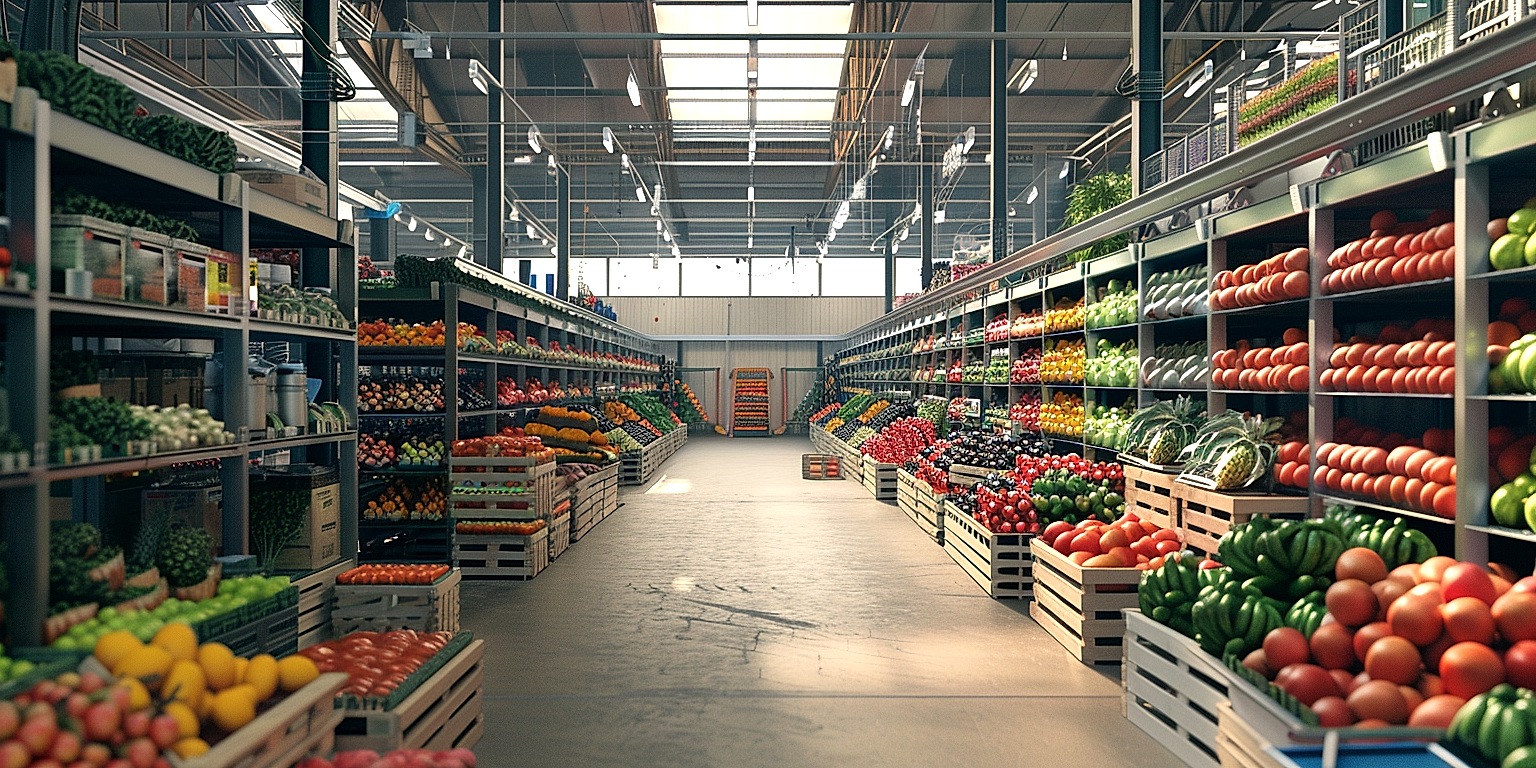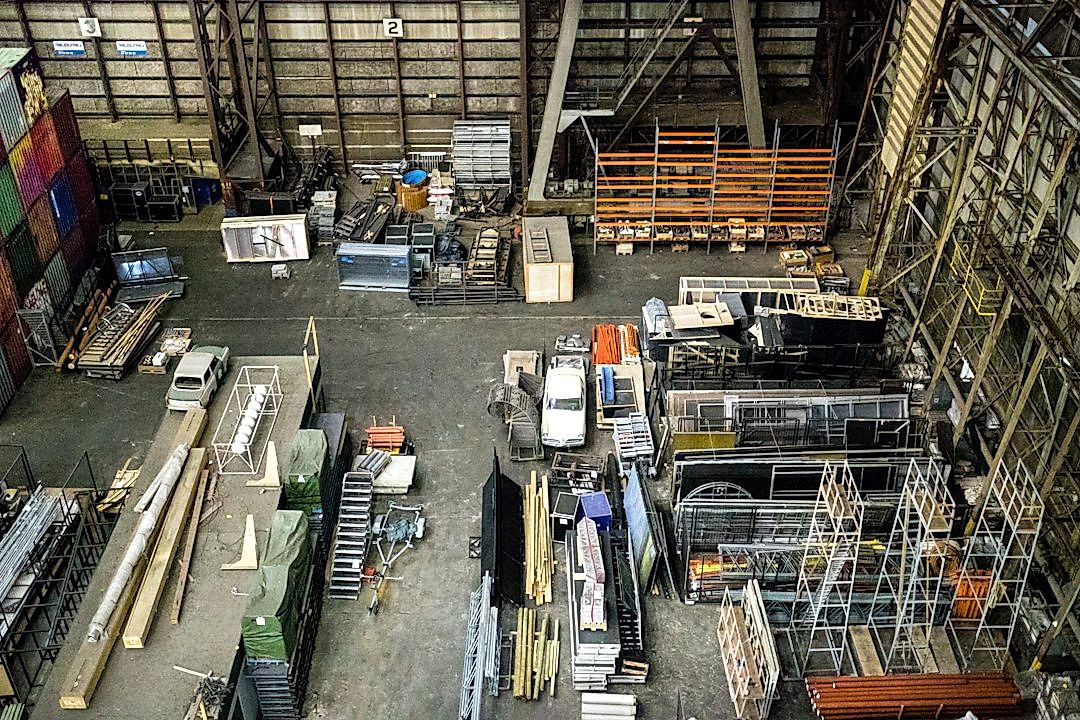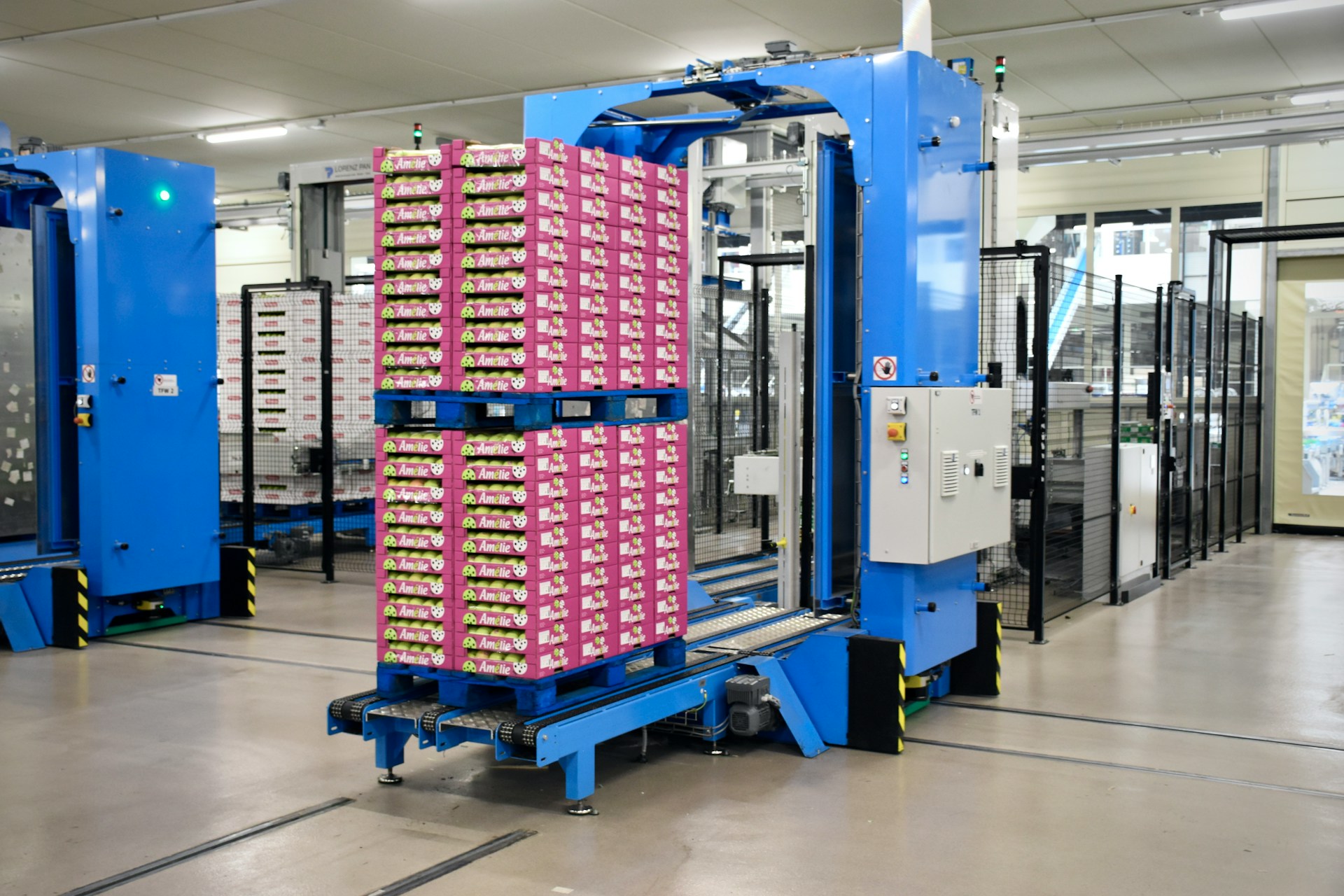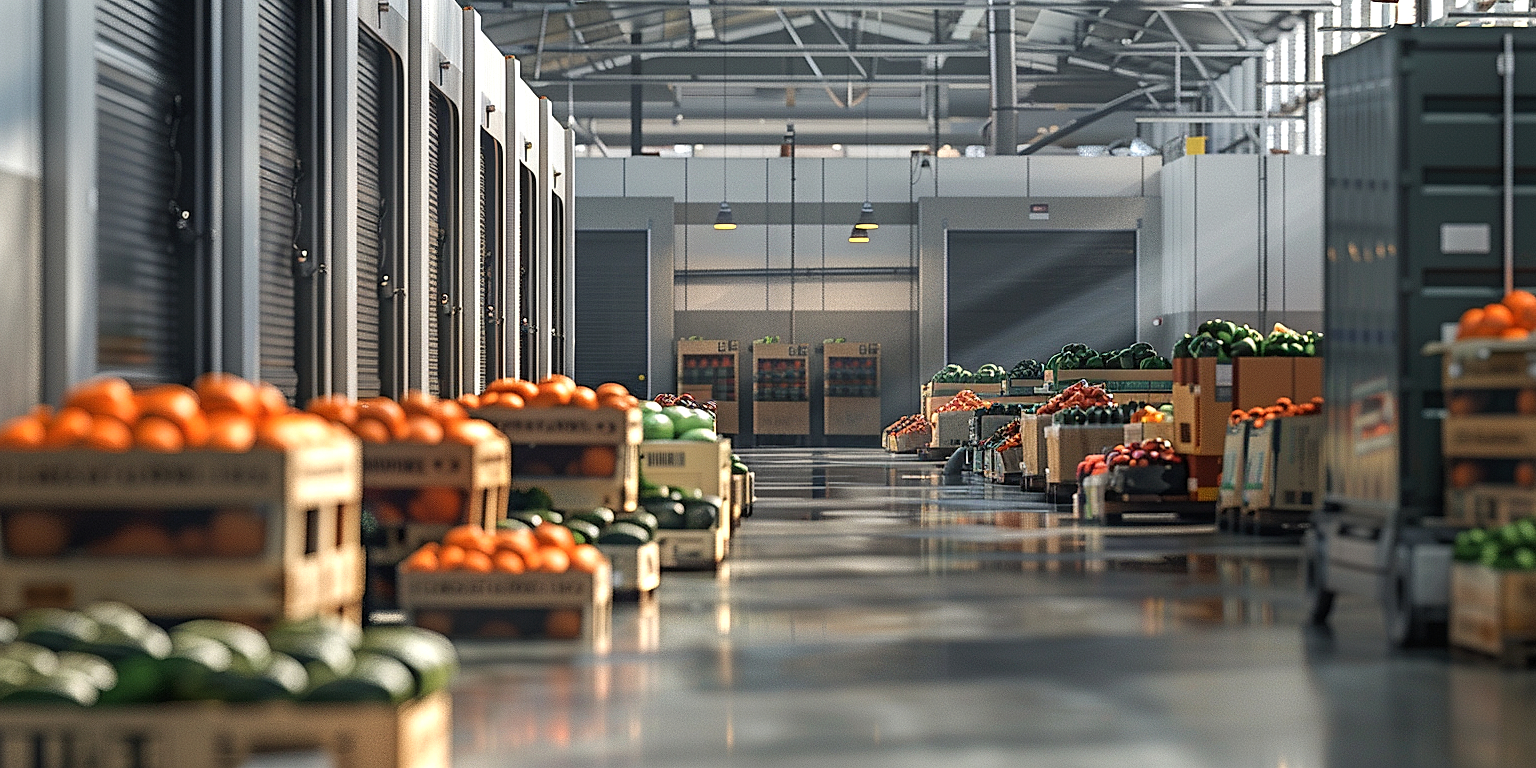Efficiency is the backbone of any successful warehouse operation, and nowhere is this more critical than in the realm of produce distribution.
Time is a critical factor due to the perishable nature of the goods involved.
Poor space optimization can lead to unnecessary delays, product spoilage and loss of profit.
This raises a key question: How can distribution centers better use their available space?
To maximize profitability and minimize waste, it’s crucial to master a few crucial strategies.
In the following text, we delve into these strategies to provide solutions that could renew your warehouse operations.
Contents
Space Optimization Tricks For Produce Distribution Warehouses
1. Implement Vertical Storage Systems
One of the most effective space optimization tricks for produce distribution warehouses is to implement vertical storage systems.
Unlike traditional warehouse storage solutions, vertical storage systems make use of the entire height of the warehouse.
This method maximizes the available space in the warehouse, allowing for more products to be stored efficiently.
The vertical storage system utilizes every inch of the vertical space, which can contribute to substantial space and cost savings in the long run.
The key to effective vertical storage is the use of efficient storage equipment such as high rise pallet racks or vertical carousels.
These storage solutions provide multiple layers of storage, perfectly suiting the need to store large amounts of produce in limited warehouse space.
When properly managed, vertical storage can result in substantial increase in warehouse capacity, allowing for more efficient operations.
This system also ensures that the warehouse is able to quickly adapt to changes in inventory levels, thus improving overall supply chain efficiency.
Moreover, by utilizing vertical space, the warehouse can optimize its layout and improve the flow of goods, which eventually leads to excellent customer service through quick and accurate order fulfillment.
One of the things to note is that in managing vertical storage systems, it is crucial to understand the height restrictions based on fire safety regulations.
Also, factoring in the weight restrictions is essential to ensure the viability of the storage solution and prevent any potential hazards.
Furthermore, it’s indispensable to consider the accessibility of the high shelving for prioritizing the storing of goods and organizing the delivery schedules.
While vertical storage systems can apparently create more space, companies need to invest in appropriate machinery such as forklifts that can efficiently handle high-level storage.
Lastly, to get a trend-forward design and effective application, it’s advantageous to collaborate with professional consultants who are proficient in warehouse storage layouts.
They can advise on the best ways to maximize the warehouse’s vertical potential.
Overall, vertical storage systems offer a revolutionary solution to the previously encountered space challenges in produce distribution warehouses.
2. Use Pallet Racking for Efficient Space Use
Among the numerous techniques implemented in the space optimization of produce distribution warehouses, one of the most effective methods is the utilization of pallet racking.
In essence, pallet racking is a material handling storage aid system designed to store materials on pallets or skids, which are, most of the time, used in large warehouses and even small-scale stores.
Implementing pallet racking means focusing on efficient space usage, essentially turning vertical space into a useful storage area.
Essentially, pallet racking is a storage method that involves raising pallets off the ground and stacking them on racks.
This method frees up valuable floor space, optimizes storage density and allows for the better organization of goods.
Successful implementation of pallet racking optimizes forklift access to goods, resulting in efficient time management during the picking operation.
Pallet racking systems come in different types such as selective pallet rack, drive-in and drive-through, push-back, and pallet flow racks each with their unique ability in increasing warehouse storage efficiency.
For instance, the selective pallet rack which is the most commonly used, offers direct access to each pallet stored and better stock rotation.
On the other hand, the drive-in and drive-through type is useful for storing a large amount of uniform products as it allows forklifts to enter lanes of stacked rows.
The push-back rack design, particularly useful for warehouses focusing on time-sensitive produce, allows each pallet to be accessed directly from the aisle while maintaining good storage density.
Meanwhile, pallet flow racks, also known as gravity flow racks, are inclined and use gravity to move heavy pallets to the front of the rack for easy access.
Regardless of the type used, the key benefit of pallet racking lies in its ability to increase storage capacity by utilizing vertical space, which can drastically cut down on the amount of floor space needed for storage.
Produce distribution warehouses often overlook the vertical space as useful storage space, focusing more on the horizontal space.
This situation creates a lot of wasted space which, if effectively used, can significantly increase the storage capacity of a warehouse.
By taking a vertical approach to your storage, you can often double or even triple the storage capacity of your warehouse, depending on your building’s height.
Furthermore, a comprehensive pallet racking scheme can offer superior product accessibility, allowing for efficient order fulfillment and inventory rotation.
In essence, to achieve space optimization in produce distribution warehouses, pallet racking systems are an essential tool to effectively utilize space and improve efficiency.
.3. Automate Warehouse Processes to Save Space
The realm of warehouse management is continuously evolving, with emerging technologies presenting new opportunities to improve efficiency and optimize space.
One of the most transformative trends in recent years is the automation of warehouse processes.
Applications of automation within a warehouse environment are vast and can significantly impact space optimization, particularly within produce distribution warehouses.
Automated storage and retrieval systems (ASRS), for instance, can increase storage density and reduce the footprint of storage areas.
These intelligent systems can store items in a high-density manner, reducing the need for excessive aisle space and thereby freeing more space for storage.
In other words, automation doesn’t merely save operational costs, but also maximizes usage of available space.
Beyond ASRS, conveyor systems and robotic processes can further streamline operations and reduce the space dedicated to manual tasks.
Automated sortation and conveyor systems, for example, can quickly move and organize products, reducing clutter and boosting space efficiency.
Similarly, robotic processes can not only save time but also create a more orderly and compact storage arrangement.
Automated guided vehicles (AGVs) and autonomous mobile robots (AMRs) can help in transporting products compactly and systematically, thus conserving space.
These machines are programmed to use the most optimal route for transportation, avoiding any wastage of space.
Moreover, modern warehouse management systems (WMS) can be leveraged to create data-driven space utilization strategies.
Utilizing data and predictive analytics, the WMS can create smart storage plans that effectively distribute products in the available space.
Incorporating automation also translates into fewer errors, less product damage, and reduced need for buffer stock, saving valuable space.
It’s vital to remember that automation may require a significant initial investment, but the long-term returns in terms of space savings and operational efficiency are substantial.
Automation is therefore an essential tool in optimizing space within produce distribution warehouses.
4. Regularly audit inventory for outdated items
Regular auditing of inventory plays a critical role in the optimization of space in distribution warehouses, particularly for produce, which has a limited lifespan.
For space optimization, it is crucial to determine the exact amount of produce inventory at any given point in time.
An audit goes beyond just a physical count of the items; it also involves validating the quality and freshness of the items in the warehouse.
Outdated items should be identified during these audits and immediately disposed of to clear valuable space.
For produce warehouses, the urgency of such removals is magnified as rotting or outdated produce can compromise the freshness and quality of other items.
If not handled promptly, outdated produce can lead to contamination risks, potential health hazards, and unnecessary clutter.
The greater the audit frequency, the more efficient the warehouse operation is likely to be.
The effectiveness of regular audits in space optimization cannot be overemphasized as they help in the early detection and removal of outdated produce, hence preserving the integrity of the overall inventory and creating space for fresh produce.
Moreover, regular audits can also aid in long-term planning of warehouse operations.
Through these audits, patterns of product deterioration can be analyzed over time, leading to better inventory management and space optimization strategies.
For example, if a particular type of produce is consistently discovered to be outdated or spoiled during audits, that information can be used to revise procurement and storage strategies.
Regular audits also make the warehouse operation more transparent, reducing the likelihood of discrepancies.
These discrepancies, like phantom inventory, can lead to space being unnecessarily occupied for non-existent produce and are a common issue in warehouse management.
Utilizing technology can make the audit process more accurate and faster.
Using warehouse management systems (WMS), for instance, can ensure real-time tracking of inventory, automated audit processes, and immediate detection of discrepancies.
Efficient auditing is thereby an important part of any comprehensive strategy to optimize space in produce distribution warehouses.
5. Optimize aisle widths in line with machinery
When it comes to space optimization in produce distribution warehouses, one critical area that often gets overlooked is the aisle widths and their adjustment in accordance with the machinery.
Not only does it significantly impact the movement and overall productivity, but it also plays a crucial role in preventing accidents and any potential damages.
By optimizing aisle widths in respect to the machinery used, warehouse managers can ensure safety, better accessibility, and smoother operations in the warehouse.
Broadly speaking, the size of warehouse machinery often dictates the optimal width of aisles.
If a warehouse is utilizing large forklifts for materials handling, it would necessitate wider aisles compared to when small, compact equipment is used.
It’s vital to assess the type of machinery strategically used in the warehouse to determine the most optimal aisle width.
In the context of produce distribution warehouses, the challenge is twofold; not only do large quantities have to be moved rapidly and efficiently, but the produce also needs to be handled with care to prevent damage.
Therefore, a calculated balance between aisle width and the size of machinery becomes even more essential.
A common error is to overlook the need for future expansion or adjustments.
It’s pragmatic to design aisles with some extra width to allow for future expansion requirements or the incorporation of larger machinery.
This approach provides operational flexibility by enabling warehouse managers to adapt old aisles or designate new ones inline with changing operational needs.
A successful execution of this strategy also results in better space utilization, thereby leading to improved overall warehouse efficiency.
Furthermore, optimized aisle widths in accordance with the machinery can supplement additional space optimization strategies like vertical storage or pallet racking, leading to the consolidation of warehouse operations.
Lastly, while incorporating this strategy into the warehouse layout, it’s crucial to remember that every warehouse’s needs are distinct based on the industry, type of produce, and specific operational procedures.
Thus, optimizing aisle widths in line with machinery should certainly be an ongoing process, with regular adjustments and reassessments based on changing needs and conditions.
Such a practice would result in a productive, safe, and efficient distribution warehouse that contributes substantially towards the effective management of space.
The Bottom Line
Implementing efficient storage and warehouse processes can greatly impact the overall success of a business operation.
Making use of vertical storage solutions and pallet racking techniques not only maximizes space but also improves the organization and tracking of inventory.
By automating warehouse procedures and consistently auditing for outdated items, logistical inefficiencies can be eliminated, leading to significant cost and time savings.
Additionally, optimizing aisle widths in accordance with the machinery is crucial in maintaining a seamless flow of operations.
These strategies combined lead to a more streamlined, efficient, and productive warehouse operation.




